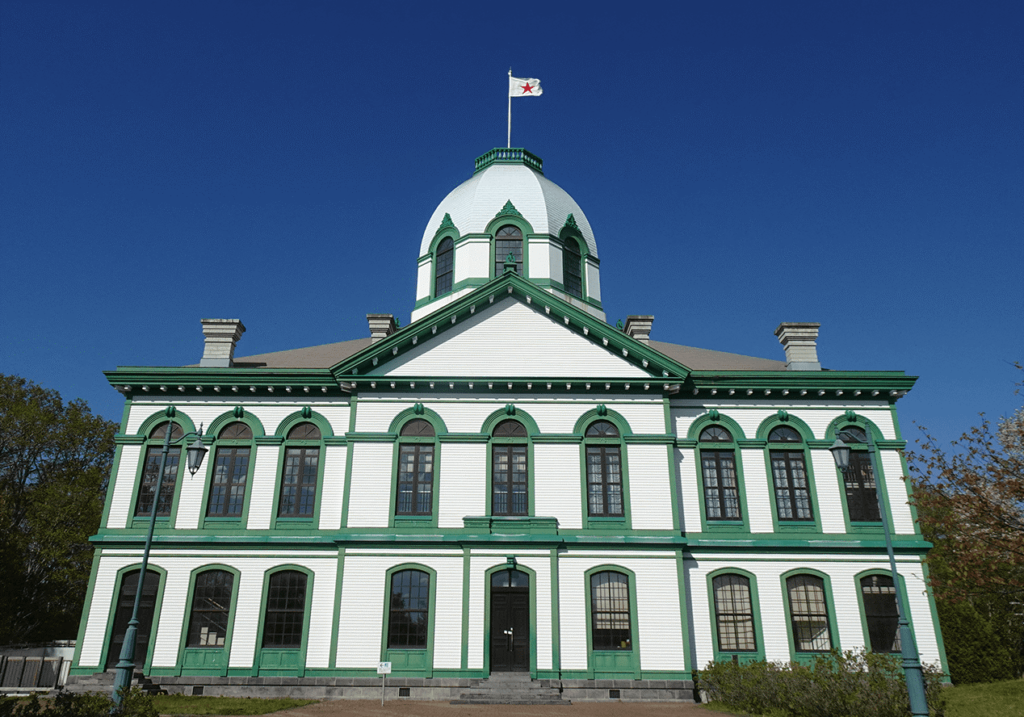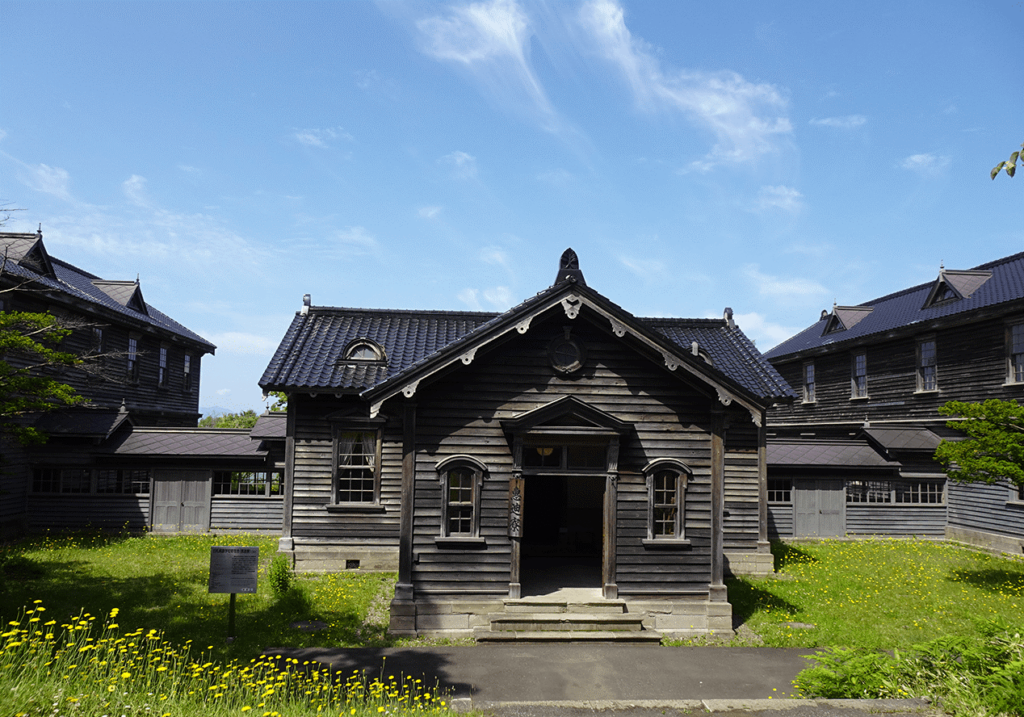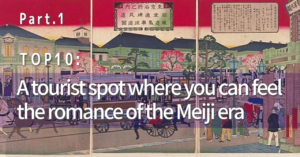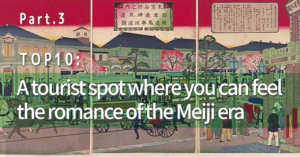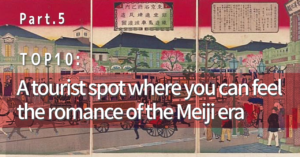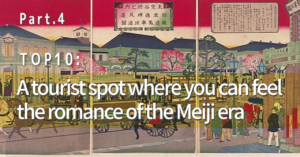Top 10:A tourist spot where you can feel the romance of the Meiji era Part.2
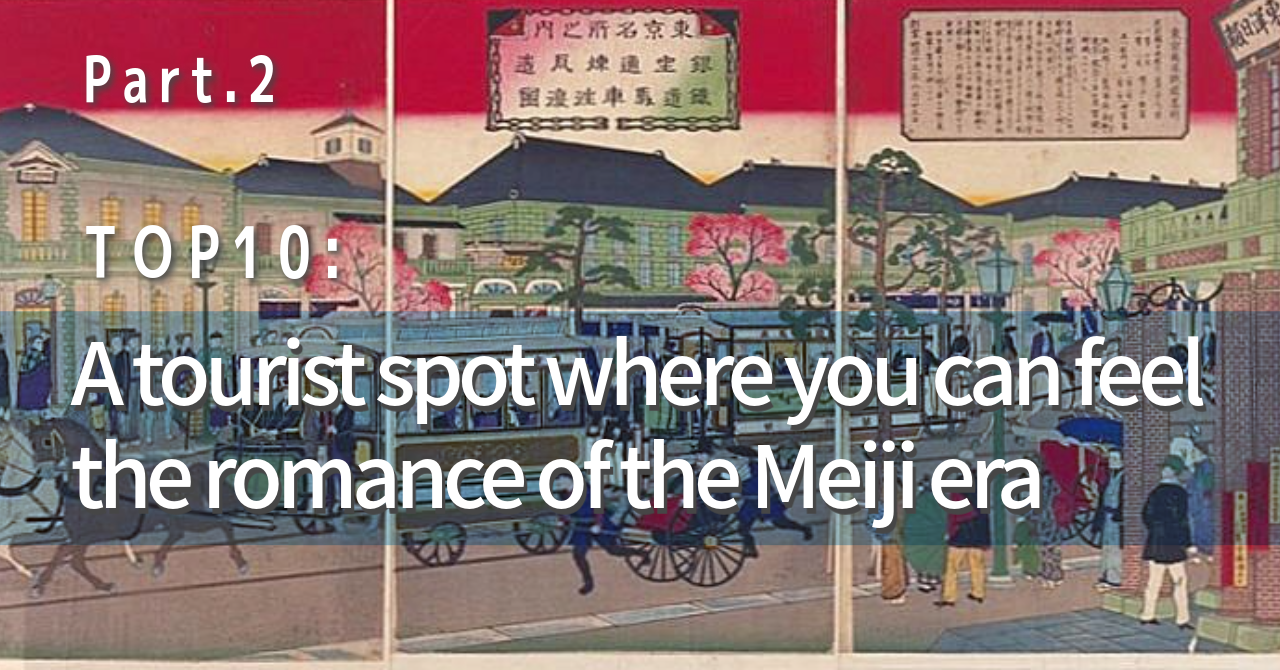
This week, I’ve featured three places: Nagasaki, Hokkaido, and Yokohama. Enjoy a journey that feels like a time slip back to the Meiji era.
During the Meiji era in Japan, which lasted from 1868 to 1912, the country underwent significant modernization and Westernization, including in the realm of fashion. Prior to this period, traditional Japanese clothing such as kimonos were the norm. However, as Japan opened to Western influences and began to modernize its institutions, Western clothing styles were increasingly adopted.
During the Meiji era, while Western fashion gained popularity in Japan, traditional attire like the hakama remained significant. The hakama, a pleated skirt-like pant worn over a kimono, was commonly used by students and martial artists. It symbolized Japanese tradition in a time of rapid modernization and Western influence.

②NAGASAKI in KYUSHU
https://www.discover-nagasaki.com/en/featured-topics/about_nagasakicity
A journey through Nagasaki, exploring tourist sites from the Bakumatsu and Meiji periods, takes visitors back to a pivotal era in Japan’s history. Once a remote port city, Nagasaki played an important role as a gateway for Western influence in Japan. Tourists can visit Glover Garden, home to the oldest Western-style house in Japan, which offers a glimpse into the lives of foreign merchants during the late Edo and early Meiji periods. In addition,Oura Church, the oldest Christian church in Japan, symbolizes the complex history of Christianity in the country. Dejima Island, originally an artificial island built to isolate Portuguese residents and later Dutch traders, serves as a fascinating historical site where visitors can learn about Japan’s period of national seclusion and eventual reopening to the world. This trip highlights not only Nagasaki’s unique architectural and cultural blend, but also its crucial role in Japan’s modernization.
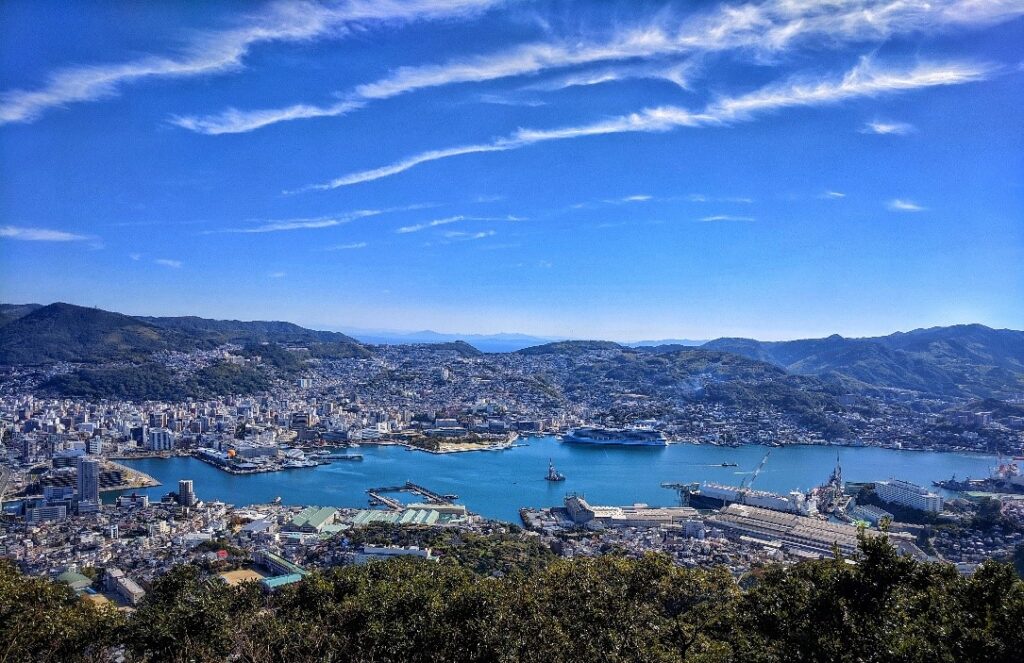
★Places to Visit in Nagasaki
Glover Garden
Glover Garden in Nagasaki, Japan, is an open-air museum that showcases the fusion of Western and Japanese influences during the Meiji Restoration. Named after Thomas Glover, a Scottish merchant who helped modernize Japan, the garden features a collection of Western-style houses built in the late 19th century. Visitors can explore Glover’s own residence, which is the oldest Western-style building in Japan and offers a panoramic view of Nagasaki Harbor. The site is not only a historical monument, but also a symbol of Japan’s early interactions with the West.
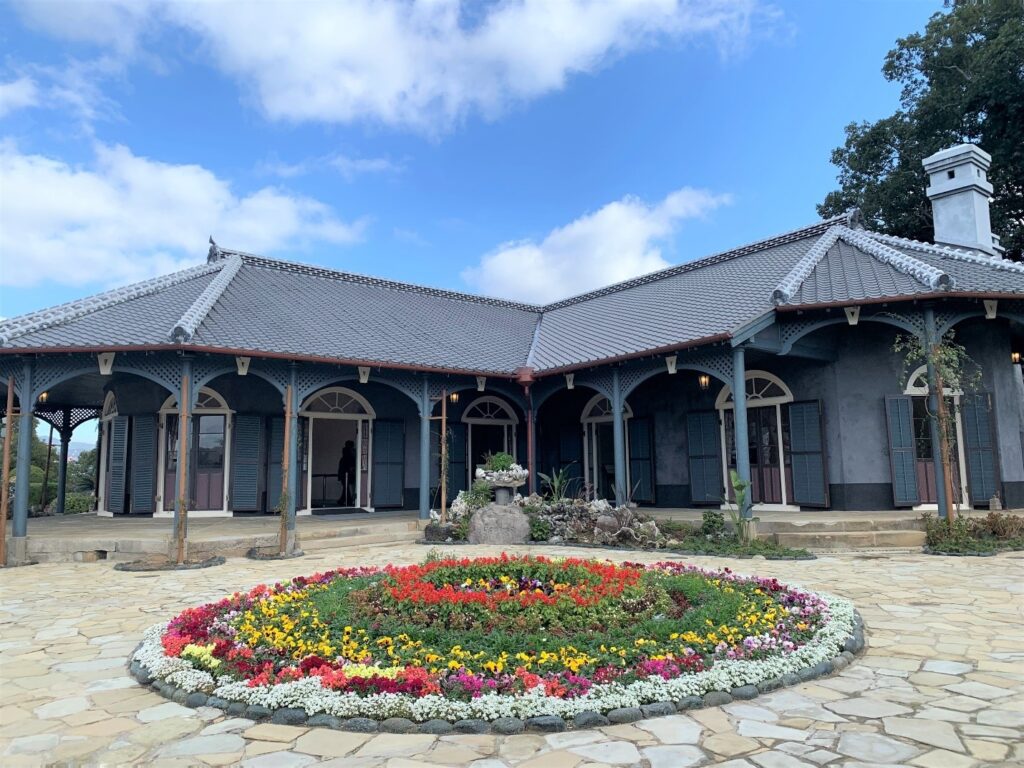
Oura Church
Ōura Church, also known as Ōura Cathedral, is located in Nagasaki, Japan, and is the oldest Christian church in the country. Built in 1864 by French missionaries, it is an impressive example of Gothic architecture. The church was originally built to serve the growing community of foreign merchants in the area and to honor the Twenty-Six Martyrs of Japan, Christian missionaries and followers who were martyred in the 16th century. Today, Ōura Church is a designated national treasure of Japan and serves as a symbol of the enduring history and influence of Christianity in Japan.
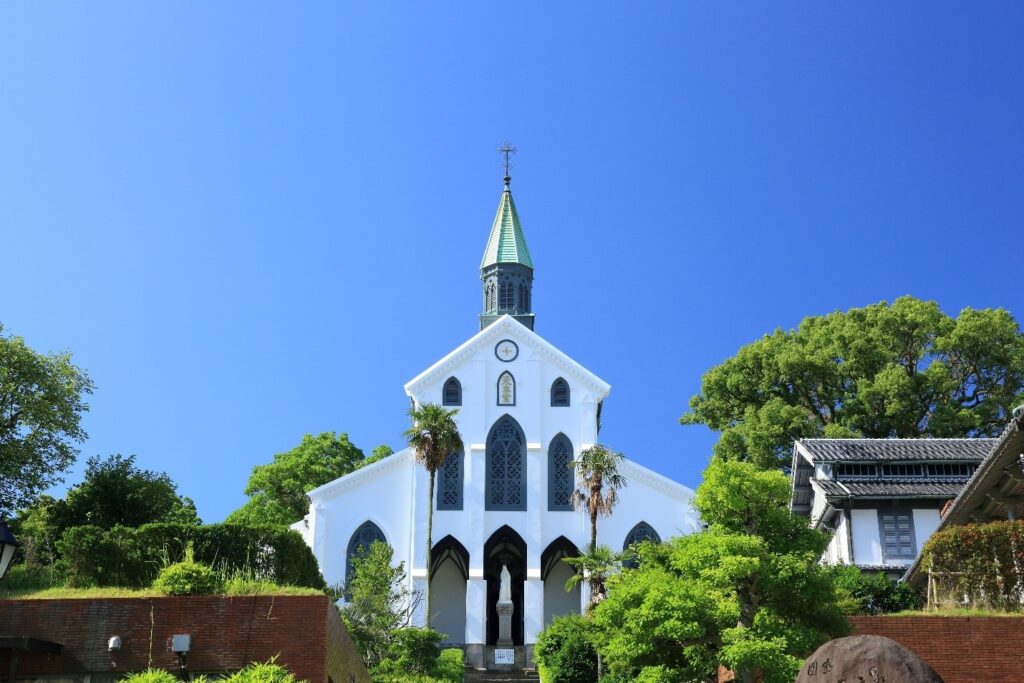
Dejima Island
Dejima, located in Nagasaki, Japan, was originally an artificial island built in the early 17th century to isolate Portuguese traders and prevent the spread of Christianity. After the expulsion of the Portuguese, it became the sole conduit for European trade during Japan’s period of national isolation, Sakoku, and was home exclusively to Dutch traders. The island served as a crucial exchange point where the Dutch were allowed to live and trade under strict regulations, allowing Japan to receive Western knowledge and technology while minimizing foreign influence on Japanese society. Today, Dejima is no longer an island due to land reclamation, but has been preserved as a historical site. Visitors can explore restored buildings and exhibits that depict life during this unique period in Japanese history.
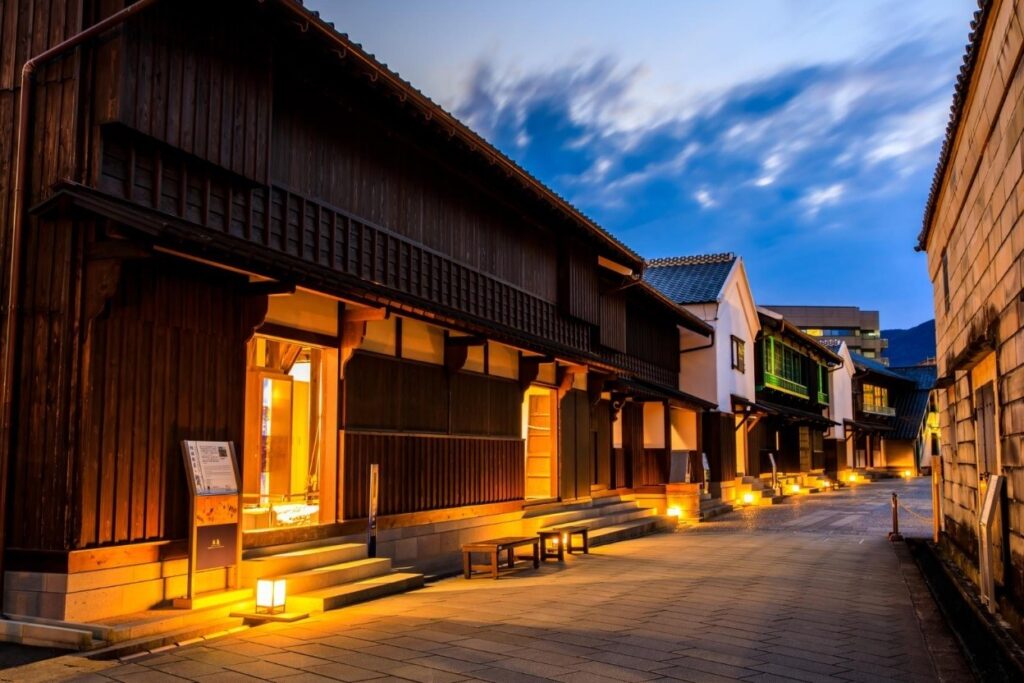
③2 spots in HOKKAIDO
During the Meiji era, Hokkaido, Japan’s northernmost island, underwent significant transformation. Previously known as Ezo, the island was renamed and formally incorporated into Japan as Hokkaido in 1869. This period marked a major push by the Japanese government to develop the island’s infrastructure and economy to secure the territory against potential Russian expansion. The government implemented a series of development projects, including agriculture, mining, and rail construction. Many settlers, including former samurai and farmers from the main islands of Japan, moved to Hokkaido encouraged by government incentives. This era laid the foundation for Hokkaido’s future growth and its role as a vital part of modern Japan.
★Places to Visit in Hokkaido
Sapporo Clock Tower
The Sapporo Clock Tower, originally built in 1878 as the Demonstration Hall of the Sapporo Agricultural College, is a notable landmark in Sapporo. Directed by Dr. Clark, the college’s first vice principal, this wooden structure from the Meiji era now serves as a museum showcasing its history. Additionally, the tower’s second-floor auditorium, suitable for unique wedding ceremonies, music concerts, and lectures, is available for rent. Despite its age, the Sapporo Clock Tower remains a cherished symbol of the city.
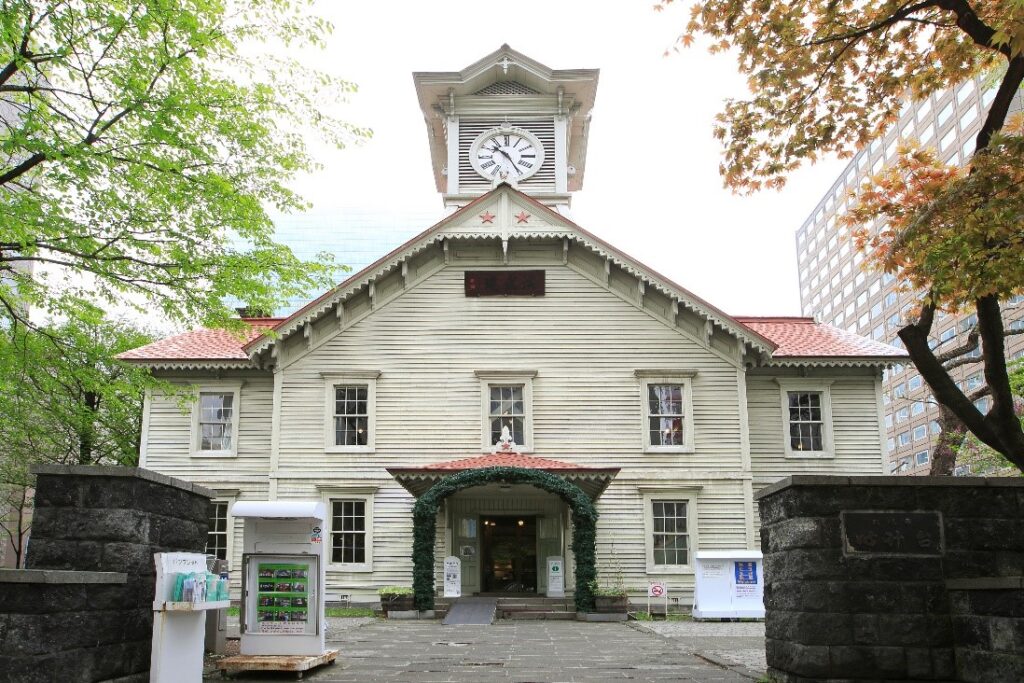
Historical Village of Hokkaido “Kaitaku no mura”
Hokkaido Kaitakunomura is a 54.2-hectare open-air museum that reconstructs and reconstructs buildings from various parts of Hokkaido built between the Meiji and early Showa periods.
The village was opened in April 1983 to provide visitors with a hands-on understanding of pioneer life and to preserve and pass on to future generations buildings that demonstrate the flow of culture.
Visitors can see the wisdom and efforts of the pioneers, and each structure will take them back to the pioneer days.
